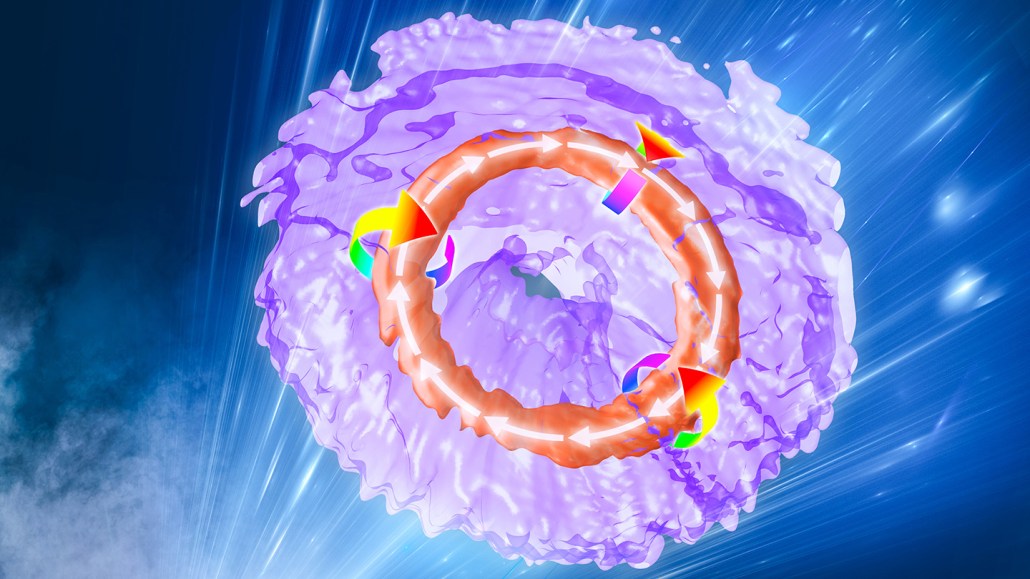
Scientists have created vortex rings of light. The ring’s surface is illustrated in transparent purple and a hollow core is shown in orange. Rainbow arrows show the rotation of the vortex, and white arrows indicate a type of angular momentum of the light.
Chenhao Wan and Qiwen Zhan/University of Shanghai for Science and Technology







